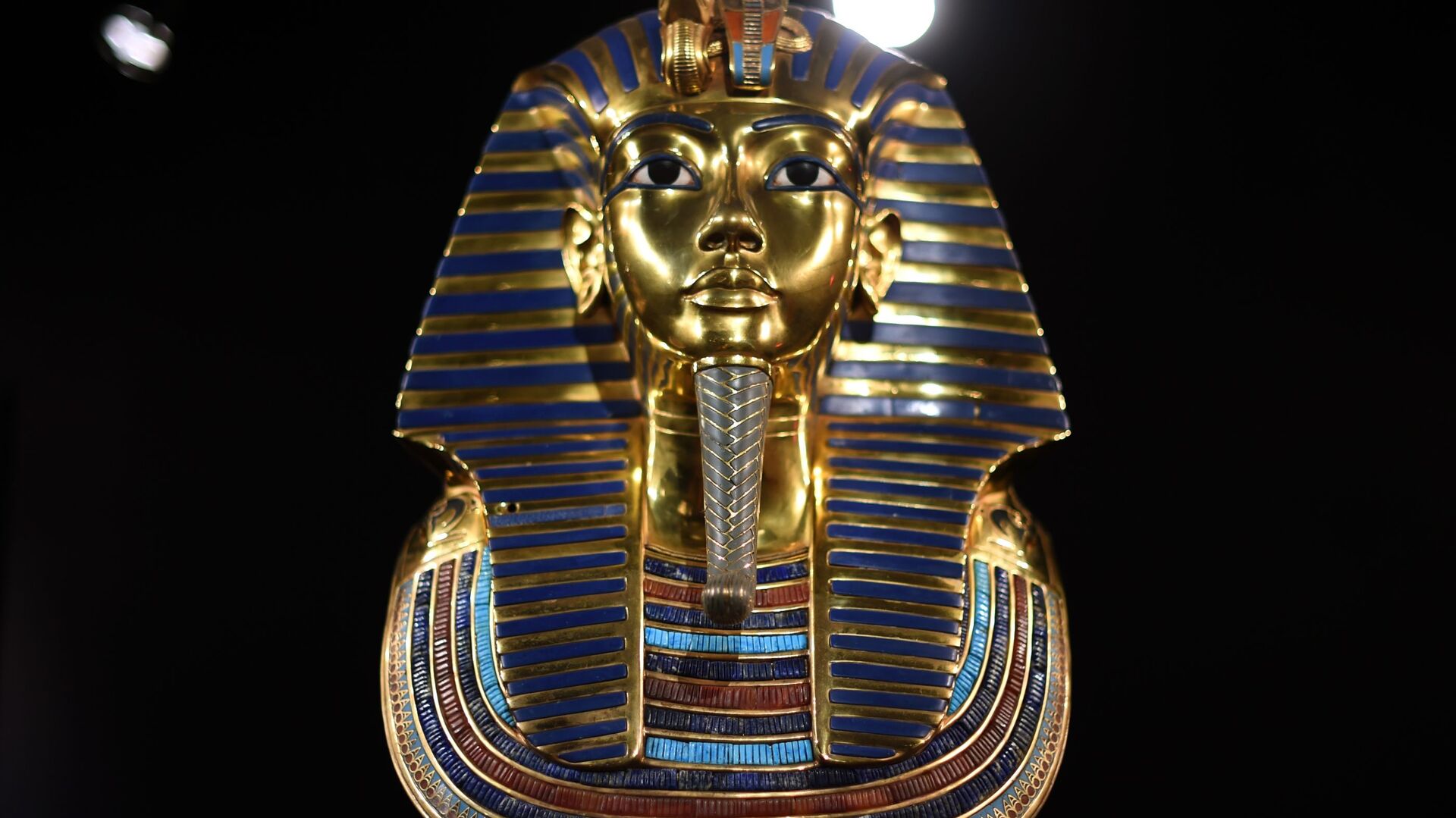https://sputnikglobe.com/20220225/scientists-claim-to-have-cracked-the-mystery-of-king-tutankhamuns-dagger-from-space-1093359374.html
Scientists Claim to Have Cracked the Mystery of King Tutankhamun’s Dagger 'From Space'
Scientists Claim to Have Cracked the Mystery of King Tutankhamun’s Dagger 'From Space'
Sputnik International
Commonly referred to as King Tut, he was the last representative of the 18th Dynasty, which ruled Egypt from around 1550 BC to 1292 BC. King Tut is credited with restoring ancient Egyptian religion following its dissolution by his father Pharaoh Akhenaten. He is also famous for the purported curse that haunts people who enter his tomb.
2022-02-25T10:12+0000
2022-02-25T10:12+0000
2022-10-19T20:16+0000
ancient egypt
king tutankhamun
dagger
study
scientists
science & tech
archaeology
https://cdn1.img.sputnikglobe.com/img/107616/66/1076166671_0:238:2799:1812_1920x0_80_0_0_2f7a37beb4f17290890b8bab5bbb52ca.jpg
A team of Japanese scientists claim to have cracked the mystery of King Tutankhamun’s "dagger from space".In 1922, archaeologists discovered the tomb of the pharaoh, which contained numerous lavish treasures, but one item stood aside from others – it was made of iron. This detail puzzled scientists, as records show that Egyptians would not begin to work with this metal for another 500 years. In 2016, researchers conducted a study that left them even more perplexed.The iron used in the dagger came from a meteorite. Researchers at the Chiba Institute of Technology claim to have solved the puzzle. According to the findings of their study, published recently in the journal Meteoritics & Planetary Sciences, the researchers conducted an X-ray analysis of the golden handle, which showed that it was created using an adhesive material known as lime plaster. However, like iron, it wasn’t used by Egyptian craftsmen until much later.The analysis also revealed that the hilt was made using a low-temperature technique, which hints at "its foreign origin, possibly from Mitanni, Anatolia". Records show that Tutankhamun’s grandfather Amenhotep III received gifts from the king of Mitanni. Researchers say that it is possible that King Tut inherited the dagger from his father, who had in turn received it from his father. The artefact, which, dates from the 14th century, was discovered in the tomb of King Tut.It was wrapped around the right thigh of the pharaoh’s body. The Egyptian ruler, who archaeologists and historians say suffered from numerous ailments, died at the age of 19. The cause of his death remains somewhat of a mystery. Some historians suggest that he died from sickle cell anaemia. Others argue that it was a combination of factors, such as a leg fracture and a severe malarial infection. Still others alleged that the pharaoh was killed, pointing to two bone fragments inside his skull.
Sputnik International
feedback@sputniknews.com
+74956456601
MIA „Rosiya Segodnya“
2022
News
en_EN
Sputnik International
feedback@sputniknews.com
+74956456601
MIA „Rosiya Segodnya“
Sputnik International
feedback@sputniknews.com
+74956456601
MIA „Rosiya Segodnya“
king tutankhamun
Scientists Claim to Have Cracked the Mystery of King Tutankhamun’s Dagger 'From Space'
10:12 GMT 25.02.2022 (Updated: 20:16 GMT 19.10.2022) Commonly referred to as King Tut, he was the last representative of the 18th Dynasty, which ruled Egypt from around 1550 BC to 1292 BC. King Tut is credited with restoring ancient Egyptian religion following its dissolution by his father Pharaoh Akhenaten. He is also famous for the purported curse that haunts people who enter his tomb.
A team of Japanese scientists claim to have cracked the mystery of King Tutankhamun’s "dagger from space".
In 1922, archaeologists discovered the tomb of the pharaoh, which contained numerous
lavish treasures, but one item stood aside from others – it was made of iron. This detail puzzled scientists, as records show that Egyptians would not begin to work with this metal for another 500 years. In 2016, researchers conducted a study that left them even more perplexed.
The iron used in the dagger came from a meteorite. Researchers at the Chiba Institute of Technology claim to have solved the puzzle. According to the findings of their study, published recently in the
journal Meteoritics & Planetary Sciences, the researchers conducted an X-ray analysis of the golden handle, which showed that it was created using an adhesive material known as lime plaster. However, like iron, it wasn’t used by Egyptian craftsmen until much later.
The analysis also revealed that the hilt was made using a low-temperature technique, which hints at "its foreign origin, possibly from Mitanni, Anatolia". Records show that Tutankhamun’s grandfather Amenhotep III received gifts from the king of Mitanni.
Researchers say that it is possible
that King Tut inherited the dagger from his father, who had in turn received it from his father. The artefact, which, dates from the 14th century, was discovered in the tomb of King Tut.
It was wrapped around the right thigh of the pharaoh’s body. The Egyptian ruler, who archaeologists and historians say suffered from numerous ailments, died at the age of 19. The cause of his death remains somewhat of a mystery.
Some historians suggest that he died from sickle cell anaemia. Others argue that it was a combination of factors, such as a leg fracture and a severe malarial infection. Still others alleged that the pharaoh was killed, pointing to two bone fragments inside his skull.



